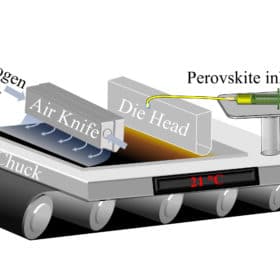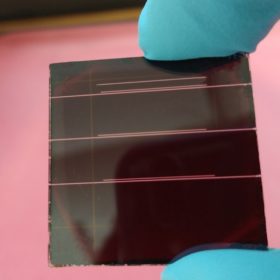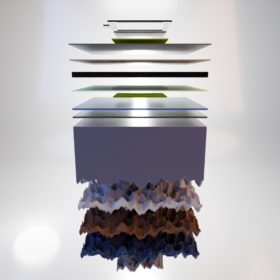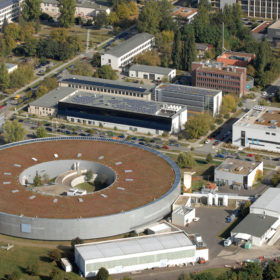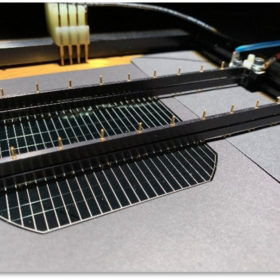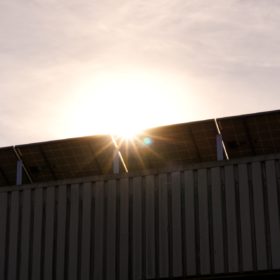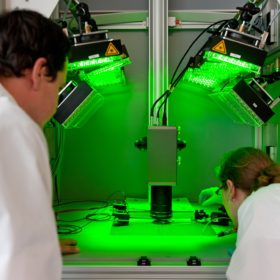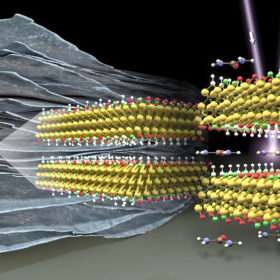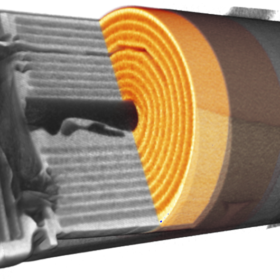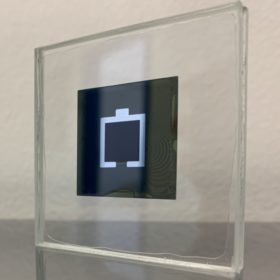Slot die coating for 20.83% efficient perovskite thin-film solar cell
Scientists in Germany demonstrated a slot die coating process for large-scale production of perovskite thin-film solar cells that achieved a maximum efficiency of 20.83%. Using an additive, and experimenting to find the optimal concentration, the group demonstrated improved control over the crystallization process – crucial for developing stable, repeatable processing.
Laser-based P3 scribing for perovskite mini modules with 19% efficiency
German scientists have improved the scribing method to interconnect perovskite PV cells, in order to then upscale them into mini PV modules. They established suitable laser fluence ranges for nanosecond and picosecond lasers and found that the former results in higher efficiency levels.
Focus on stability as tandem cells approach 30% efficiency
The Helmholtz Zentrum Berlin set a world record for perovskite-silicon tandem cell efficiency last year at 29.15%. The group has delved further into the cell materials, looking to better understand mechanisms behind the impressive efficiencies achieved so far. Their latest work shows that with the current cell design, long term stability at efficiencies up to 32.4% should be possible.
Large-scale printing for perovskites
Scientists in Germany investigated printing processes for perovskite solar cells, making some important conclusions for the development of inks suitable for the deposition of perovskite cell materials onto a substrate.
Modular systems to produce perovskite-silicon cells on six-inch wafers
Researchers in Germany are scaling up efforts to bring perovskite-silicon tandem solar cell technology into industrial scale production. The scientists say manufacturing cells of that kind is possible on widely-available six-inch silicon wafers and modular systems are being designed to do so at scale.
European consortium bid to bring 25.4%-efficient heterojunction-IBC solar cell into mass production
The EU-funded Nextbase project aims to manufacture heterojunction, interdigitated back-contact solar modules for less than €0.275/W. Solar panels featuring the Nextbase cell tech are expected to have a conversion efficiency of 23.2%, according to the European Commission.
Paving the way for lead-free perovskites
Scientists in Germany and China have developed an additive which greatly improved the performance of a tin-based perovskite solar cell. Cells fabricated with the additive reached 9.1% efficiency, and the researchers say their work opens up many new possibilities to improve the performance of lead-free perovskites.
Speeding up storage with pseudocapacitors
Scientists at Germany’s Helmholtz Zentrum Berlin have made a discovery they say could greatly increase the energy storage capacity of titanium-based ‘MXene’ pseudocapacitors, ultimately leading to faster-charging batteries. The group found adding urea molecules between MXene layers increased the material’s storage capacity by up to 56%.
The inner workings of a lithium battery
An international group of scientists has developed a comprehensive method to track the microscopic processes at work in lithium batteries. Employing a ‘virtual unrolling’ model developed for ancient manuscripts too sensitive to be opened, the group peeked inside the layers of a commercial battery to gain a better understanding of the processes at work and the degradation mechanisms affecting them. Their findings, the group says, could provide a benchmark for battery characterization.
Tandem cells approaching 30% efficiency
Scientists at the Helmholtz Zentrum Berlin have taken back the world efficiency record for a perovskite/silicon tandem solar cell, achieving 29.15% with a device measuring 1cm². The record has been confirmed by Fraunhofer ISE, and according to HZB, this means that the 30% efficiency mark is within reach.
